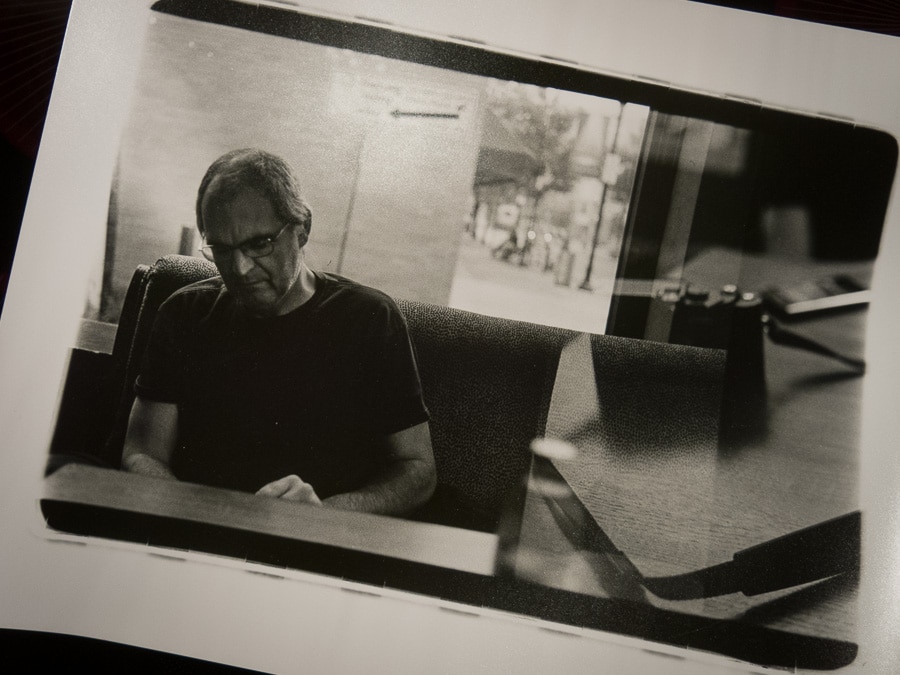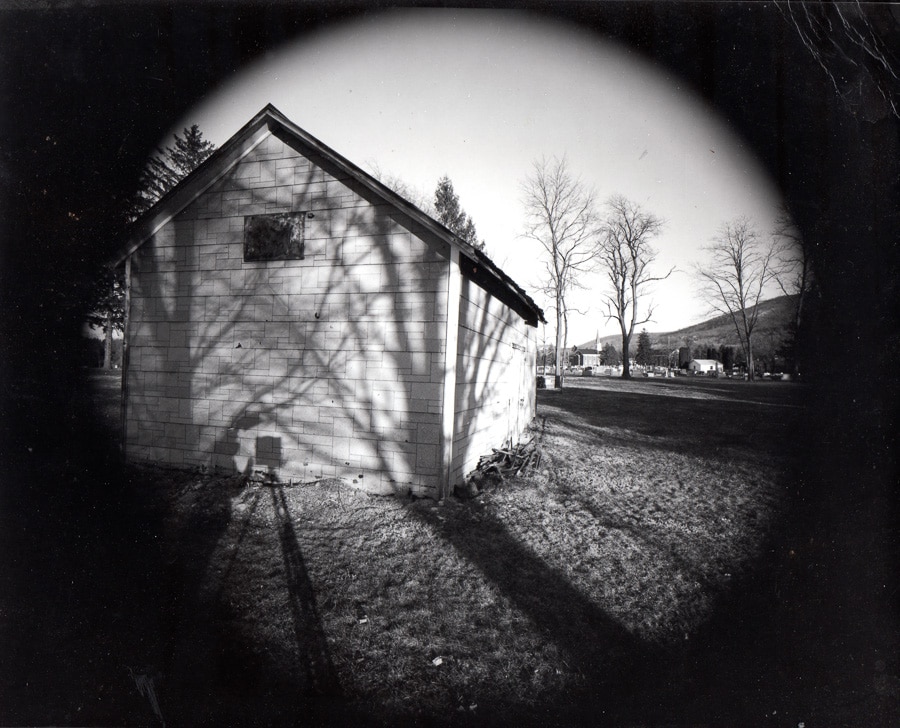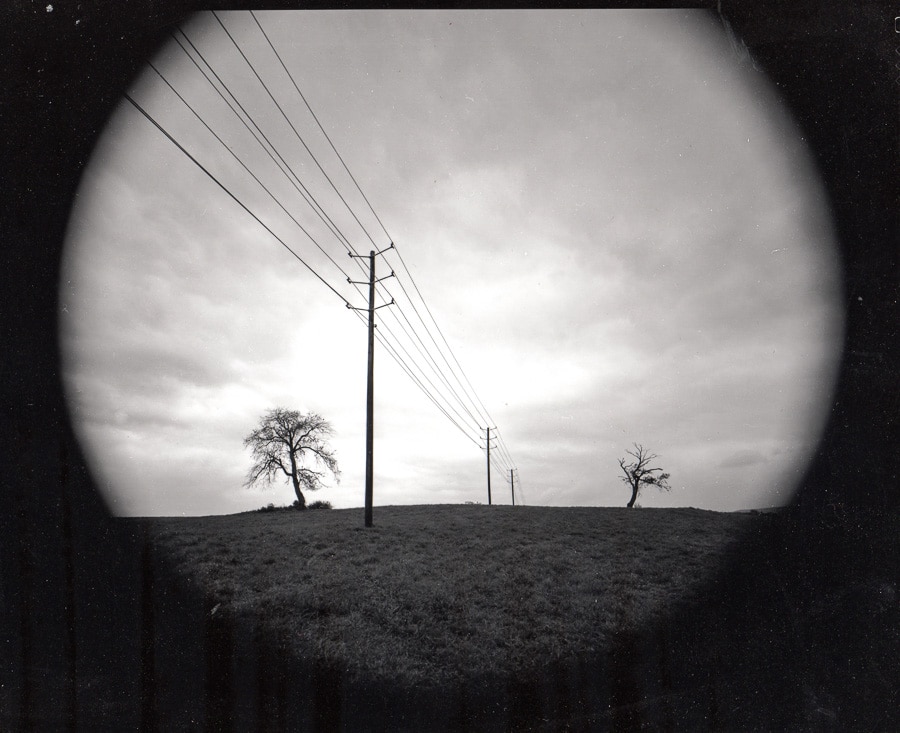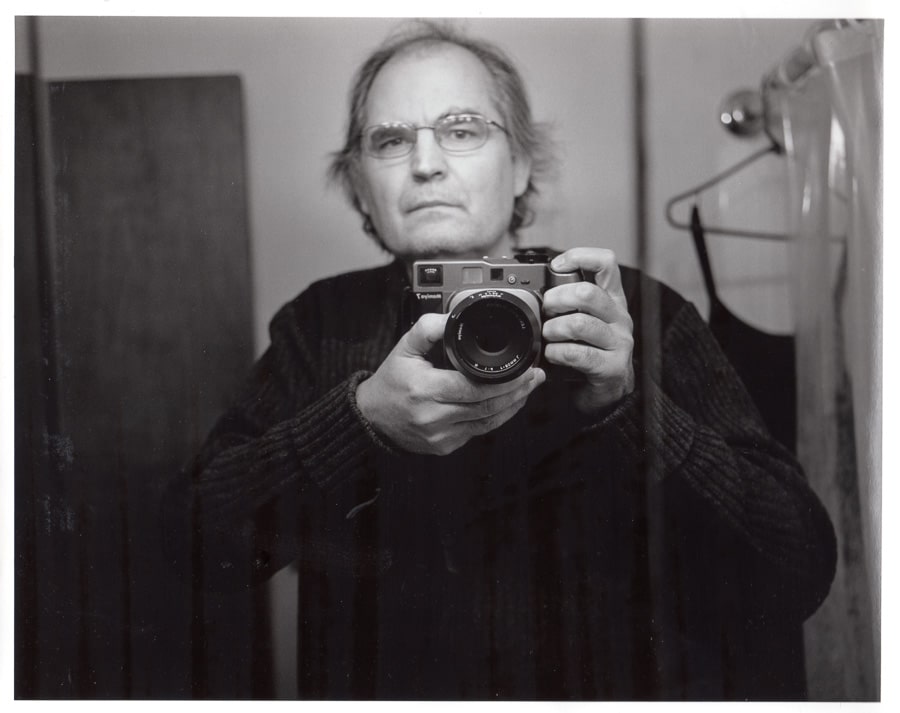 Photographic History
Photographic History
Before the Vespa scooter, before marriage and children and Belgian Sheepdogs there was photography. Like the love of chocolate and a draw to the outdoors photography has been a constant companion. Looking through a box of prints and contact sheets is like walking a trail of personal photographic history; an illustrated story of where I’ve been. The prints also mark an end of a photographic life — the moment in time when film gave way to digital capture of images. The film vs. digital photography discussions are as boring as which motorcycle or scooter is best. There is no answer, only utility and preference at any given moment.
My friend and photographer Gordon Harkins made the picture of me at Saint’s Cafe on one of our Sunday morning meetings to share prints and discuss projects. I don’t remember whether the juxtaposition of me with my Leica M6 was the result of an odd reflection or a double exposure. It does “feel” like those times.
 Photography in the 1980s
Photography in the 1980s
I can’t remember who made this photograph. My guess is a self portrait because the camera was seldom turned my way by anyone else. It’s odd to look at now as I try to bridge a gap of perhaps 35 years. I recognize the Domke bag over my shoulder, the bright red wool Boy Scout shirt by father-in-law gave me, the white tennis shoes I always wore. An expensive home sits in this field now. The alfalfa replaced by a sweeping desert landscape of turf and artfully placed trees.
Photography was how I earned a living then. Any use of it as a means of personal expression was still ahead. I was fascinated by expanding technical skills and acquiring equipment. I was approaching the height of my work with ad agencies and corporate annual reports.
I was a hired gun.
 Enter the View Camera
Enter the View Camera
A view camera is a heavy, slow, plodding device. Not unlike a Harley Davidson motorcycle. But it’s nature holds unique power to pull you off life’s treadmill and lead you to a different way of surviving until it changes the way you live and see the world.
A couple years before I purchased my first Vespa scooter I was using an 8×10 Zone VI view camera with a heavyweight wooden tripod. With lens, film holders and other minor accessories it was a ponderous load to use and carry. Photographically, from a technical perspective, the large format negatives make stunningly crisp, almost luminous silver prints. I was seduced by these traits independent of image content. Over time though, a more important power emerged from this graceless beast — the ability to slow down time.
The image of the old, InselBrick sided garage was photographed using a lens that couldn’t cover the entire piece of 8×10 film yielding a circular image. I experimented with this point of view for a long time as I wondered about what I was seeing. This view looks across the cemetery in Boalsburg, Pennsylvania toward the Zion Lutheran Church.
 Noticing the World
Noticing the World
These intertwined tree trunks have posed for me dozens of times over the last 25 years. The symbolism of my marriage is not lost on me as I have watched them through the seasons grow and age. The small details all around and my ability to see them has driven my photographic practice and how I process my life. It started with the view camera experimentation and continues as I work digitally. My goal has never been to travel to majesty, but rather see it all around.
 Searching for Meaning
Searching for Meaning
There’s a thread running through most of the images I make — I’m searching for meaning or understanding. All those “WHY” questions that some say are best left to God. Still they echo through my head, sometimes quietly and sometimes in a howl. While riding the journey can often be divided into two distinct categories; the quiet ride that’s a flight of physical pleasure and mental quiet. And the other, an ongoing conversation of the significance of what I’m seeing and feeling. The camera helps manage that conversation.
Looking at this photograph I still wonder why I made a decision on that day to haul the view camera out of the truck and carry it to this location. Years later I see a scooter ride through the central Pennsylvania landscape. Perhaps it was a fortune telling of things to come.
 Photographic Themes
Photographic Themes
This 8×10 contact print echoes a theme that flows through much of the imagery I create and post on Scooter in the Sticks — the empty landscape devoid of people or vehicles. The empty places I’m drawn to over and over again.
This scene is three miles from my doorstep but it’s an illusion of the place. I’m reminded of the lies photographs tell and the warning viewers should heed of everything they see. The photographer is a magician and the choices which render how something is seen — what’s included and excluded — affects the story.
With this photo if you stood in this place this is exactly what you would see. Behind me at some distance is a sprawling housing development. Just over the rise is a highway and shopping center and off to the left another highway and housing development.
My photographs reflect what I need to see. In a busy, chaotic day, it’s nice to imagine a serene place.
 Film vs. Digital
Film vs. Digital
Before cellphone selfies were the pictures in the mirror, reflections of the photographer in myriad places, all made in hopes of discovering something about myself. I see my father, the passage of time, a heart attack, a grandfather, someone who wants to ride a scooter. I know a lot of people who only see fear in the mirror but I’ve always felt it’s a test of my ability to acknowledge the nature of the ride I’m on.
And the ride eventually ends.
Questions of film vs. digital are irrelevant — only the image matters and what I’m trying to understand or say. It’s been a passenger on the ride for a long time and hopefully will be with me for many more miles.
Keep your camera close.